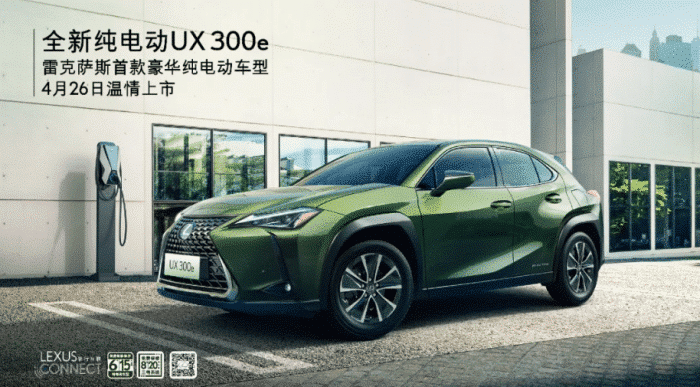Toyota will launch pure electric models in China to catch up with competitors in the market.
Toyota China said today that the Toyota brand's first mass-produced pure electric SUV models in China, C-HR and IZOA EV, and the Lexus brand mass-produced pure electric SUV model UX 300e will be launched in late April.
The Lexus UX 300e is scheduled to be launched on April 26.
As the first mass-produced model of Lexus electrification, the UX 300e is based on the Lexus UX crossover.
The appearance did not deliberately emphasize the identity of its pure electric model. It still uses the design of the iconic air intake grille, which is similar to the fuel version.
The maximum cruising range of UX 300e is over 400 kilometers.
C-HR and IZOA EV are Toyota's first purely electric mass-produced models in China and are positioned for small SUVs. Both new cars come from the TNGA architecture.
By adopting a design that carries the battery pack under the body, Toyota lowers the center of gravity of the vehicle without sacrificing space in the vehicle. At the same time, the battery pack is designed as a part of the body frame, which further enhances the rigidity of the body.
Toyota claims that the torsional rigidity of the two new cars is 20% higher than the current C-HR and IZOA, and the center of gravity is 14% lower than the current C-HR and IZOA.
Using the development experience of hybrid vehicles, Toyota sets the battery high-voltage circuit in the center of the battery pack and surrounds the interior with a cold air pipe to form a buffer to protect the battery cells and high-voltage circuit.
At the same time, in order to slow down the decay of battery capacity, Toyota maintains the charging capacity within a reasonable range, and the battery pack internal temperature control and other technologies to suppress battery aging.
C-HR and IZOA EV is equipped with a large capacity battery pack of 54.3kWh, and its power consumption per 100 kilometers is 13.1kWh/100km. Under NEDC conditions, the cruising range can reach 400 kilometers.


